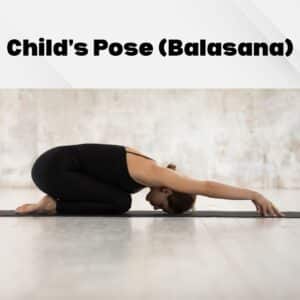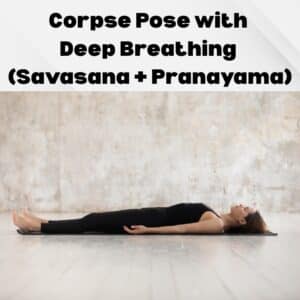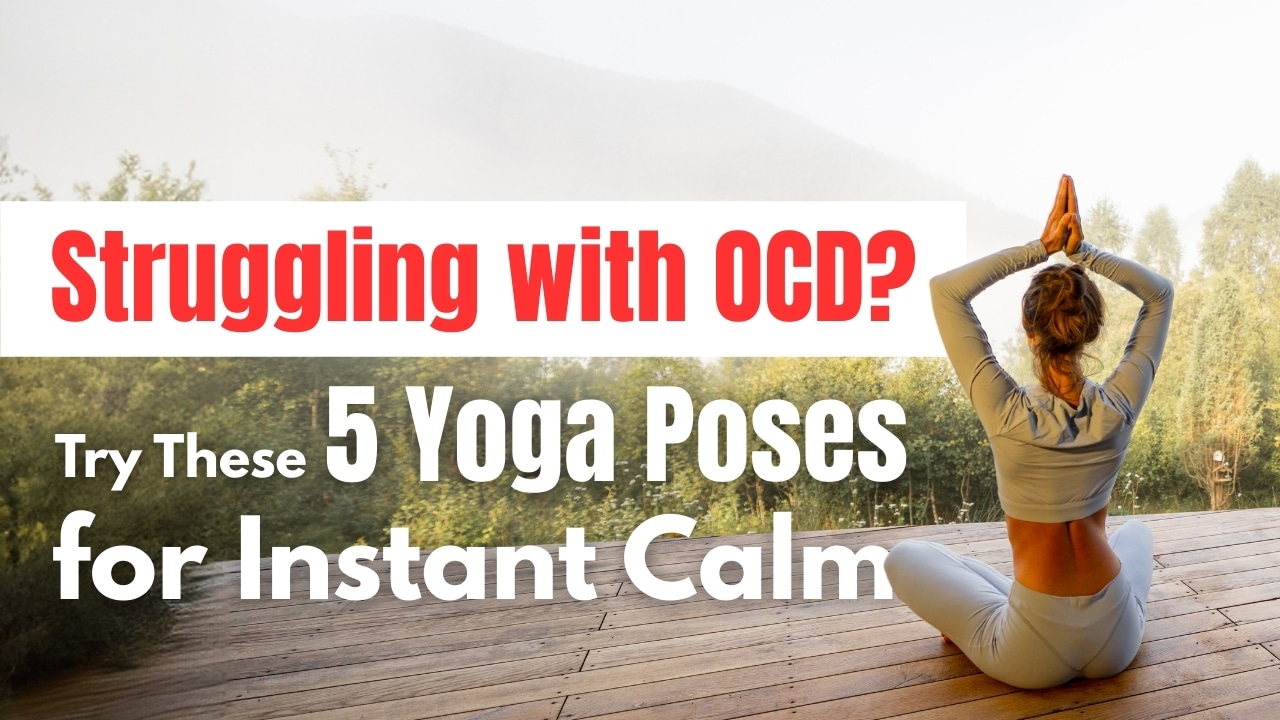Understanding OCD, Anxiety & Stress
When you have obsessive-compulsive disorder (OCD), it can feel like your thoughts are constantly replaying themselves. The same thoughts keep coming back, and no matter how hard you try to ignore them, they manage to penetrate. This continual mental cacophony often produces anxiety and tension, making daily living feel heavier than it should.
There is more to OCD than routines or being “extra careful.” When intrusive thoughts lead to recurrent behaviours or mental rituals, it’s a serious mental health issue. It becomes more difficult to achieve serenity over time as stress and anxiety continue to fuel this cycle.
The good news? Yoga provides a natural way of body and mental relaxation. Yoga for OCD can help you manage what triggers you every day, lower anxiety and relax your nervous system through mindfulness, breathing techniques, and gentle movement.
In this guide, you will learn not only learn about OCD in a simple and practical way but also learn easy yoga poses, breathing exercises, and lifestyle changes which will help you feel calmer, focused and in control of your thoughts.
Can Yoga Really Help with OCD?
You might have tried many ways to feel better, like therapy, medication, and lifestyle changes, if you have OCD. If you are thinking Can yoga really make a difference? Then it’s a yes. Yoga therapy for OCD, addressing the body as well as the mind, helps by breaking the cycle of anxiety, stress, and repetitive thoughts. Although it’s not a miracle treatment, it can be an effective natural remedy for OCD that works in conjunction with other therapies.
Mind-Body Connection in OCD
- Yoga treatment for OCD is very useful as the body becomes relaxed when you do gentle poses and deep breathing. It sends a message to the brain that makes it feel calm and relaxed.
- Intrusive thoughts and urges that bother you are less powerful when your body is relaxed and help to make it easier to manage daily stress.
- Over time, Yoga makes you more aware of the connection between mind and body, so you can notice triggers and deal with calmness instead of fear.
Evidence & Research on Yoga for Mental Health
-
Researchers have found that doing yoga for anxiety and stress lowers the stress hormone cortisol and makes people feel more emotionally balanced in general.
-
Clinical studies published in journals like Frontiers in Psychiatry show that yoga can help people with mental health problems caused by worry.
- A lot of mental health professionals say that yoga can help people with OCD in addition to treatment or medication.
Best Yoga Poses for OCD Relief and Stress Reduction
Even a small things can feel too much when OCD, anxiety, or stress take over. Yoga gives you a safe place to stop, breathe, and find balance. Here are some of the best yoga asanas for OCD and anxiety relief, they will help your mind calm down and the body release tension.
- Child’s Pose (Balasana)-
 If you can’t stop thinking about bad things, Child’s Pose is like hitting a reset button for your mind. When you fold into this position and rest your face on the ground, you feel safe and at ease. One of the best yoga poses for anxiety because it calms the nervous system right away, slows down breathing, and makes the body feel more grounded. This pose can help people who are dealing with OCD symptoms and stress causes get away from their thoughts for a while.
If you can’t stop thinking about bad things, Child’s Pose is like hitting a reset button for your mind. When you fold into this position and rest your face on the ground, you feel safe and at ease. One of the best yoga poses for anxiety because it calms the nervous system right away, slows down breathing, and makes the body feel more grounded. This pose can help people who are dealing with OCD symptoms and stress causes get away from their thoughts for a while. - Legs Up the Wall Pose (Viparita Karani)-
 Legs Up the Wall is your best friend if anxiety keeps you up at night or OCD thoughts make it hard to calm down. Just lying down with your legs up against the wall can help your blood flow and put your body into a deep state of rest. This is one of the easiest and most effective yoga poses for OCD relief and better sleep because the nervous system starts to calm down right away. It’s often used as part of yoga treatment for OCD because it makes people feel less tired, calms them down, and eases stress.
Legs Up the Wall is your best friend if anxiety keeps you up at night or OCD thoughts make it hard to calm down. Just lying down with your legs up against the wall can help your blood flow and put your body into a deep state of rest. This is one of the easiest and most effective yoga poses for OCD relief and better sleep because the nervous system starts to calm down right away. It’s often used as part of yoga treatment for OCD because it makes people feel less tired, calms them down, and eases stress.
-
Tree Pose (Vrikshasana)-
 Tree Pose is all about finding balance for people whose minds are all over the place because of repetitive thoughts. While keeping the pose, stand tall and focus on your breath. This will help your mind stay in the present moment. At first, it might shake, but that’s part of the process. With practice, both your body and mind will become more stable. People with stress and anxiety problems find this to be one of the best yoga postures for OCD because it helps them focus, calms them down, and avoids distractions.
Tree Pose is all about finding balance for people whose minds are all over the place because of repetitive thoughts. While keeping the pose, stand tall and focus on your breath. This will help your mind stay in the present moment. At first, it might shake, but that’s part of the process. With practice, both your body and mind will become more stable. People with stress and anxiety problems find this to be one of the best yoga postures for OCD because it helps them focus, calms them down, and avoids distractions. -
Seated Forward Bend (Paschimottanasana)-
 Sometimes having OCD and being stressed out makes you feel like your head is too heavy. The Seated Forward Bend is a gentle way to feel better because it lets your mind and back fold forward in surrender. This pose makes you less angry, slows down your heart rate, spreads your body, and calms your nervous system. This is yoga poses for anxiety because it helps release stress and calms the mind, which is an important part of mental health yoga practice.
Sometimes having OCD and being stressed out makes you feel like your head is too heavy. The Seated Forward Bend is a gentle way to feel better because it lets your mind and back fold forward in surrender. This pose makes you less angry, slows down your heart rate, spreads your body, and calms your nervous system. This is yoga poses for anxiety because it helps release stress and calms the mind, which is an important part of mental health yoga practice. -
Corpse Pose with Deep Breathing (Savasana + Pranayama)-
 Corpse Pose with focused breathing is the best way to relax at the end of a yoga class or even after a long, stressful day. Focusing on deep breaths while lying down with your eyes closed can help break bad thought patterns and reset your nervous system. Many experts on using yoga to treat OCD say that Savasana is the best pose for relaxing the mind and body, focusing, and stopping yourself from thinking too much. It’s a yoga pose that helps you to deal with stress and anxiety as it teaches the mind to let go.
Corpse Pose with focused breathing is the best way to relax at the end of a yoga class or even after a long, stressful day. Focusing on deep breaths while lying down with your eyes closed can help break bad thought patterns and reset your nervous system. Many experts on using yoga to treat OCD say that Savasana is the best pose for relaxing the mind and body, focusing, and stopping yourself from thinking too much. It’s a yoga pose that helps you to deal with stress and anxiety as it teaches the mind to let go.
Breathing Techniques for OCD and Anxiety
When anxiety or OCD thoughts take over, the first thing that often changes is the breath. It gets shallow, fast, and unsteady. The brain receives the message that something is wrong, which makes stress and unwanted thoughts even worse. The good news is that you can learn simple breathing techniques for OCD, which will help you send a calming message back to your body and mind.
Pranayama for stress relief is one of the most valuable tools in yoga therapy. Pranayama, which means “control of breath,” is a set of practices that help keep the nervous system in balance, lower stress, and stop thinking too much all the time. If you do these yoga breathing exercises for OCD regularly, they can help you feel calmer and more in charge.
1. Deep Belly Breathing (Diaphragmatic Breathing)

Put one hand on your stomach and slowly breathe in. This will make your belly rise. Let out a soft breath, and feel your belly fall. Keep going for a while. This easy breathing exercise can help people with OCD feel less stressed right away, slow down their rushing thoughts, and bring their attention back to the present moment.
2. Alternate Nostril Breathing (Nadi Shodhana Pranayama)-
 Close one nose with your right thumb, breathe in through the other, and then switch sides. Take deep, slow breaths. This practice balances both sides of the brain, lowers overthinking, and makes you feel more emotionally stable. It is known as one of the best pranayama for anxiety and OCD.
Close one nose with your right thumb, breathe in through the other, and then switch sides. Take deep, slow breaths. This practice balances both sides of the brain, lowers overthinking, and makes you feel more emotionally stable. It is known as one of the best pranayama for anxiety and OCD.
3. Box Breathing (Four-Part Breath)

Hold your breath in for four counts, then let it out for four counts and hold again for four counts. Do this several times. People often suggest this method as a natural way to relieve stress because it gives the mind structure, lowers panic, and makes a steady rhythm that stops racing thoughts.
4. Bee Breath (Bhramari Pranayama) 
Close your eyes, take a big breath in, and let out a soft humming sound like a bee. This is a breathing exercise that can help people with OCD and worry relax right away. It calms the nervous system and releases tension.
Morning vs Evening Yoga for OCD Relief
It’s not possible to give a single answer to the question of when is the best time to do yoga for mental health. The best time for you relies on when your mind needs the most help. Both morning and evening have their own magic.
Morning Yoga – A Fresh Start for the Mind
You could start your day with calm breathing and gentle stretches instead of worrying or running around. When you do yoga in the morning, you feel clear and sure of yourself. It’s like a shield for people with OCD or anxiety—it lowers stress before it builds up and gives you the focus to deal with problems quietly. Yoga in the morning for just 10 minutes can help relieve stress and make the whole day feel lighter and more calm.
Evening Yoga – Letting Go of the Day
A lot of the time, OCD triggers and nervous thoughts get worse at night. In this case, doing yoga in the evening can help with OCD. When you combine a few relaxing poses with deep breathing, you can let go of the stress of the day and calm your mind. For your body, it’s like saying, “You can rest now.” Not only does yoga in the evening help you feel less stressed, but it also gets you ready for a deep, restful sleep, which is what every worried mind want.
Daily Yoga Routine for OCD Relief
Consistency is more important than strength when it comes to OCD and anxiety. If you do the same short, easy exercise every day, it will help you feel more in charge and calm your mind. It can make a big difference in your mental health if you do yoga every day for just 15 to 20 minutes.
Morning Routine (10–15 minutes)
Child’s Pose (Balasana): You can begin your day by putting your forehead on the mat. This will quickly relieve stress and make you feel safe.
Tree Pose (Vrikshasana): You need to train your mind to stay in the present moment instead of getting lost in negative thoughts by improving your balance and attention.
Evening Routine (10–15 minutes)
Legs Up the Wall (Viparita Karani): This pose is great for getting ready for a good night’s sleep and letting go of the stress of the day.
Corpse Pose with Deep Breathing (Savasana + Pranayama): For the last part of your exercise, lie down in corpse pose and take deep breaths. Let your mind calm down as you do this.
Nutrition & Lifestyle Changes to Support OCD Recovery
As much as yoga can help the mind, the right foods and habits can do the same, for people with OCD, a balanced diet can help. For mental health, making easy changes to your lifestyle can help lower stress and stop unwanted thoughts.
Foods That Calm You Down: Herbal teas, nuts, seeds, bananas, leafy veggies, and nuts calm the nervous system. Foods with omega-3s, like flaxseeds and salmon, make you feel better.
Avoid Stimulants: Too much sugar, caffeine, and processed foods can make nervousness and OCD symptoms worse. Instead, pick something soft like warm milk or fruit.
Better sleep: You’ll sleep better if you stick to a regular sleep plan, spend less time in front of a screen, and have a relaxing night routine.

